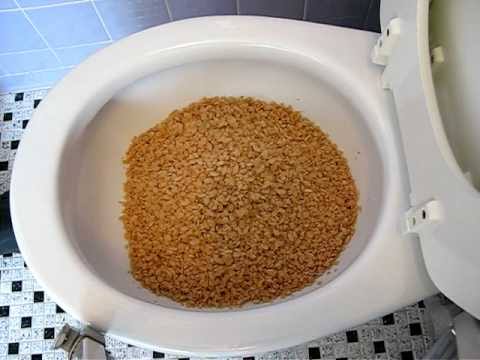The content directly below involving Think Twice Before Flushing Food Down Your Toilet is highly insightful. Have a go and draw your own final thoughts.

Introduction
Many people are often faced with the predicament of what to do with food waste, particularly when it concerns leftovers or scraps. One usual inquiry that emerges is whether it's okay to purge food down the toilet. In this short article, we'll delve into the reasons why individuals may consider purging food, the effects of doing so, and different approaches for appropriate disposal.
Reasons why people could consider purging food
Absence of awareness
Some individuals may not know the prospective damage caused by flushing food down the bathroom. They might incorrectly believe that it's a harmless method.
Convenience
Flushing food down the bathroom may look like a quick and very easy remedy to throwing away undesirable scraps, especially when there's no neighboring trash bin available.
Laziness
Sometimes, individuals may simply select to flush food out of sheer negligence, without taking into consideration the repercussions of their activities.
Effects of flushing food down the bathroom
Ecological impact
Food waste that winds up in waterways can contribute to pollution and injury aquatic ecosystems. In addition, the water used to flush food can strain water resources.
Plumbing concerns
Purging food can result in clogged up pipelines and drains pipes, triggering pricey plumbing repair work and troubles.
Kinds of food that ought to not be purged
Fibrous foods
Foods with fibrous structures such as celery or corn husks can obtain entangled in pipelines and cause clogs.
Starchy foods
Starchy foods like pasta and rice can take in water and swell, causing clogs in pipelines.
Oils and fats
Greasy foods like bacon or cooking oils must never be purged down the bathroom as they can strengthen and create blockages.
Proper disposal methods for food waste
Using a waste disposal unit
For homes furnished with garbage disposals, food scraps can be ground up and purged through the plumbing system. Nonetheless, not all foods are suitable for disposal in this manner.
Recycling
Specific food product packaging materials can be recycled, reducing waste and decreasing ecological impact.
Composting
Composting is a green method to throw away food waste. Organic products can be composted and used to enrich dirt for horticulture.
The importance of correct waste administration
Decreasing ecological harm
Appropriate waste administration techniques, such as composting and recycling, help lessen pollution and preserve natural resources for future generations.
Securing pipes systems
By preventing the method of flushing food down the commode, home owners can avoid expensive plumbing repair services and maintain the stability of their pipes systems.
Final thought
In conclusion, while it may be tempting to flush food down the bathroom for convenience, it's important to comprehend the prospective repercussions of this activity. By embracing appropriate waste management methods and dealing with food waste sensibly, individuals can contribute to much healthier plumbing systems and a cleaner atmosphere for all.
FLUSH FOOD DOWN THE TOILET?
FLUSHING FOOD CAN CAUSE BLOCKED DRAINS IN YOUR HOME
All of the plumbing fixtures in your home are connected to the same sewer pipe outside of your home. This outdoor sewer pipe is responsible for transporting all the wastewater from your home to the Council sewer mains. Even small pieces of food that go down the kitchen sink can cause problems for your sewer. It should therefore be obvious that flushing larger bits of food, such as meat, risks a clog in either the toilet itself or the sewer pipes. Flushing greasy food is even more problematic because oil coagulates when it cools, coating the interior lining of your pipes.
THE TOILET IS NOT A BIN
Food isn’t the only thing that people shouldn’t be flushing down the toilet. People use the toilet to dispose of all kinds of things such as tampons, makeup wipes, dental floss, kitty litter and even underwear. Water goes to great lengths to educate residents about the high costs and stress placed on wastewater treatment systems simply from people flushing the wrong stuff down the toilet. It costs taxpayers millions of dollars each year, and homeowners thousands in blocked drain repairs.
FLUSHING FOOD IS A WASTE OF WATER
Flushing food is a waste of our most precious resource - water. In June this year Level 1 water restrictions were introduced to protect water supply from drought conditions. Much of New South Wales continues to be affected by prolonged drought with recent figures revealing up to 97 per cent of the state remains in drought. Depending on whether you have a single or dual flush toilet, every single flush uses between five and 11 litres of water. In the current climate this is a huge amount of water to be wasting on flushing food that should be placed in the bin (or better yet, the compost).
https://www.jabplumbingsolutions.com.au/blog/can-you-flush-food-down-the-toilet

I'm just very focused on Think Twice Before Flushing Food Down Your Toilet and I am praying you appreciated the blog post. Appreciated our article? Please share it. Help somebody else discover it. Thanks for going through it.
Rates